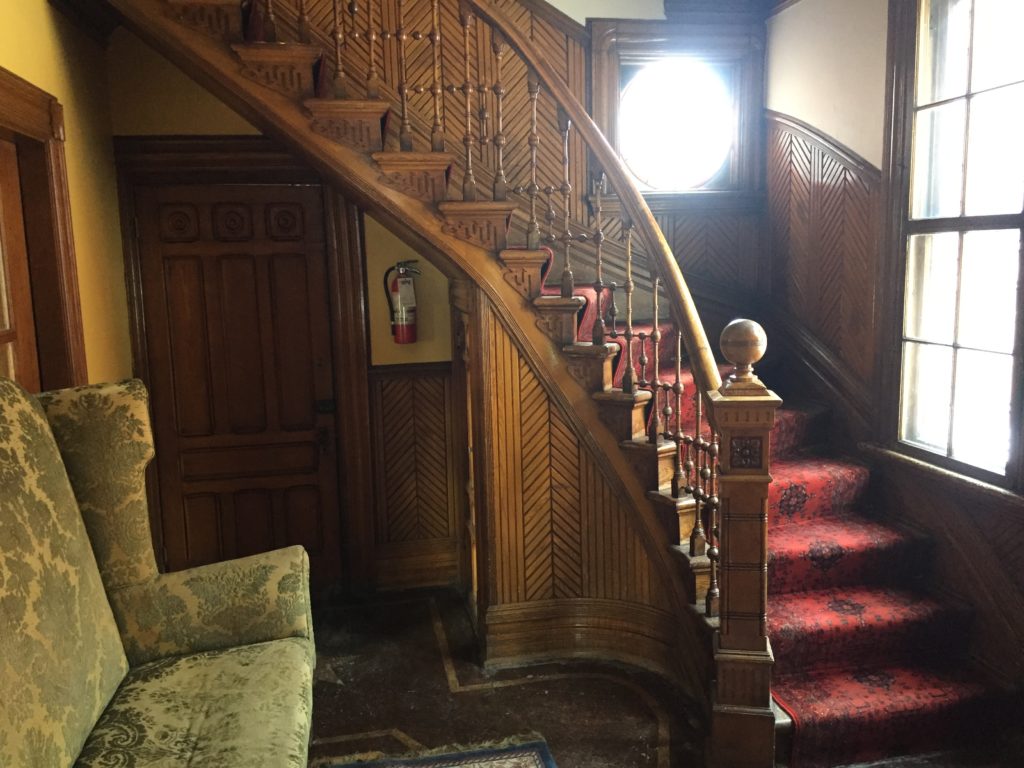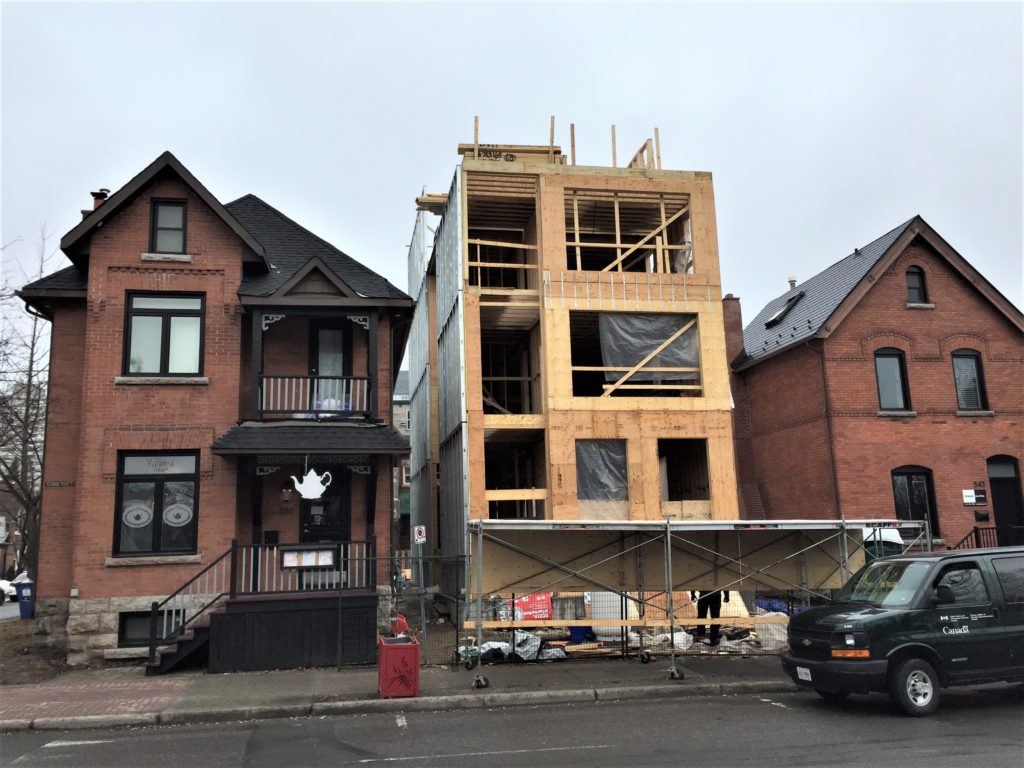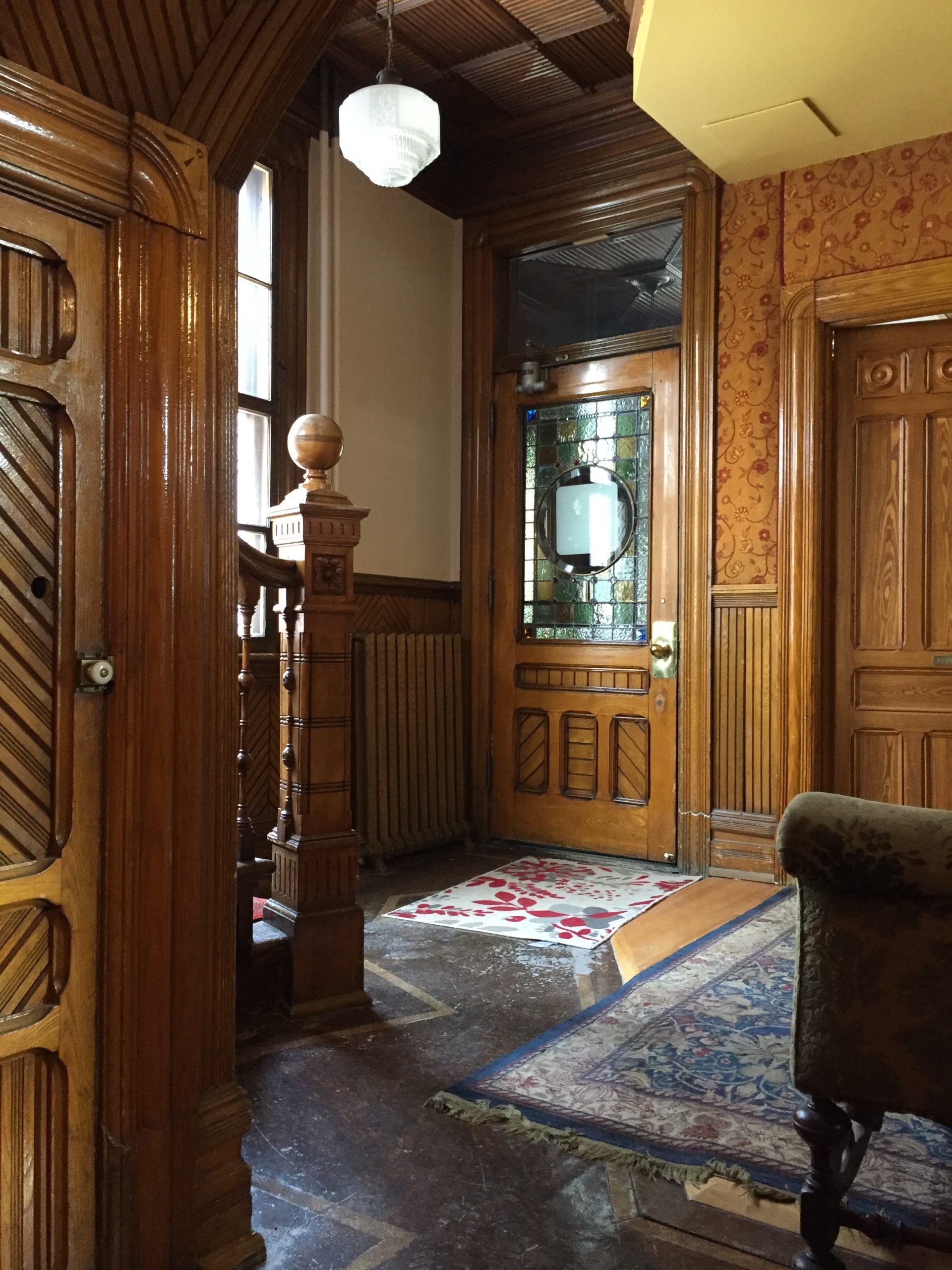Up for Renewal: Confronting the Insurance Industry’s Problem with Heritage Properties
When Frank Voisin, President of Kitchener, Ontario real estate development firm Voisin Capital Inc., went looking for insurance for one of his heritage properties recently, he soon fell down an Alice in Wonderland rabbit hole.
His local insurance broker followed the usual procedure of canvassing insurers for quotes. But this time, surprisingly, they only came back to Voisin with two quotes, both asking for a “heritage appraisal”, a requirement he had never seen before. What did insurance companies mean by “heritage appraisal,” Voisin wondered, very concerned that he would spend $3,000-$5,000 for an appraisal report that would not be accepted?
Seeking clarity, Voisin approached the Appraisal Institute of Canada (AACI) – a leading Canadian real property valuation association – but they didn’t know what was meant by a “heritage appraisal” either. What’s more, AACI wasn’t able to supply him with a list of approved “heritage appraisers,” for the simple reason that their association didn’t have a “heritage” credential.
“It’s so frustrating,” says Voisin, “for an insurer to ask for things that they themselves have not defined properly, where they cannot recommend anyone whose appraisals they’ve accepted in the past, or where they have a specific list of requirements. It was like they were demanding something, but weren’t sure why they needed it; like some other group had forced them to ask for it and they were just blindly following. Considering the number of heritage buildings in every Ontario municipality, all of which have insurance, it felt like we were blazing our own path up the mountain. It literally took 40 to 50 emails, and half a dozen phone calls, with two different appraisers involved asking questions about the requirements.”
Voisin’s persistence paid off and his happy ending eventually arrived. The insurer with the lower quote finally agreed that what they were looking for in this “heritage appraisal” was an analysis of “replacement value as if new.” This kind of appraisal would account for the value of heritage components in the old building, but also recognize that many of these existing components could not be re-built if destroyed as they did not meet the current building code. Problem solved, but others remain. Who, for instance, was this shadowy “group” requiring a “heritage appraisal”? Some have suggested it might be traced back to the reinsurers – the companies who insure the insurers. While the symptoms of a tense dynamic between older/heritage properties and insurance are becoming growing more apparent, the answers are tangled and murky. Like Voisin, for many Canadian heritage property owners, their own insurance saga may only just be beginning.
What is happening? And why now?
Insurance is not a luxury. It is an essential and inextricable part of contemporary life. Without it, many important things – like getting a mortgage, leasing a building, running a lunch counter at a house museum – are simply not possible. In mid-2021, the National Trust began to receive reports that insurance policies on heritage properties (designated, inventoried, or merely old) were being cancelled with 24-hour notice, not being renewed, or being rejected with no clear rationale. The rise in rates and outright refusals was generating nasty knock-on effects. Municipal heritage planners and provincial-territorial heritage officials across the country were reporting mounting queries from property owners about the process for de-designating properties, and it was casting a pall over new designation initiatives, including conservation districts. And heritage aside, it was also creating additional challenges for sustaining and reusing Canada’s massive older building stock, precisely when the country needs to leverage their value – as housing, entrepreneurial incubation spaces, or building material (e.g., embodied carbon, avoided new resource extraction) – for social equity, economic resilience, and climate action.
Industry insiders have noted that the Canadian insurance sector is in near-crisis mode, and older/heritage properties are playing a small but significant role in the turmoil. As in the early to mid-2000s when there were similar insurance pressures, the industry is currently in a very “hard” market: it is having to pay out massive claims due to extreme weather events and is now going to great lengths to minimize any other risks it can. The result is that any property that has unknown factors or risks – whether real, perceived or misunderstood – are being questioned or rejected. Older buildings, especially designated heritage buildings, appear to have become a target of this approach. But how widespread is the issue?

(The lobby of National Trust for Canada headquarters, Ottawa). Misconceptions around the “reproduction” of heritage features in the event of a total loss can be a major challenge for heritage properties. Photo: Chris Wiebe
The desire to get beyond anecdotal evidence and get a cross-country snapshot of the issue prompted the National Trust to conduct a national survey. In Quebec, Amis et propriétaires de maisons anciennes du Québec (APMAQ), a large association dedicated to owners of heritage properties, was also wrestling with the growing insurance issue. Both organizations agreed to conduct similar surveys in spring and early summer 2022, with the National Trust receiving over 900 responses and APMAQ over 300.
Top Takeaways from the National Surveys and Next Steps
The results from these surveys confirm that rising insurance rates, coverage cancellation, and quote refusal for heritage designated and older properties (predominantly owner-occupied residential but also commercial and non-profit) are happening unevenly across the country (some regions more than others) and have been rising over the past two years: 61% had difficulties in obtaining insurance coverage in the National Trust survey and 52% in APMAQ’s. The surveys also showed that property owners were getting contradictory advice around coverage refusal and rate rises from insurers, which points to misunderstanding and inconsistent information as a key issue. Insurance companies, said survey respondents, honed in on particular concerns when refusing coverage: age of building (50% National Trust, 27% APMAQ), heritage status (55% National Trust, 10 % APMAQ), and type/condition of a particular building component (28% National Trust and 27% APMAQ).
There are several key takeaways after sifting through the data and the written comments. The perception persists that heritage designation will bring additional property insurance requirements. Strong official statements of heritage designation requirements from provinces-territories and municipalities would help clarify matters. Ontario for instance released a statement in 2012 which, in part, read: “If a building on a heritage property is completely or partially destroyed, the designation by-law does not require the owner to replicate any lost heritage attributes. A replacement building can be of a different design.” More recently, Toronto Heritage Planning underlined this very issue in January 2022: “…[S]ometimes uninformed insurance companies equate designation with increased replacement cost risks as they may be under the false belief that listing [inclusion on a heritage inventory] or designation under the Ontario Heritage Act requires that a structure, or heritage attributes on a property be replicated in the event they are destroyed.” The lingering terminology challenges remain, however, for the insurance industry and general public around “replacement cost” coverage when it comes to heritage buildings, and what it means to be “repaired or replaced with like kind and quality” in the event of a loss. And as Frank Voisin’s experience above underscores, the process around the appraisal of heritage properties needs greater scrutiny.

(Construction on 551-543 Somerset Street W in Ottawa). Will the new house in the middle get lower insurance quotes? Photo: Chris Wiebe
And so, the work on the insurance file continues. The National Trust is working with a National Task Force group of industry, government, and community leaders (including APMAQ) to:
- Bring attention to issues surrounding insurance and heritage/older properties; 2
- Identify root causes, key pressure points, and opportunities for industry impact; and
- Coordinate a strategy to actively resolve the issue undertaken in concert with industry stakeholders, including the Insurance Bureau of Canada and its provincial branches.
Please stay-tuned for more insights and information in the coming months.


